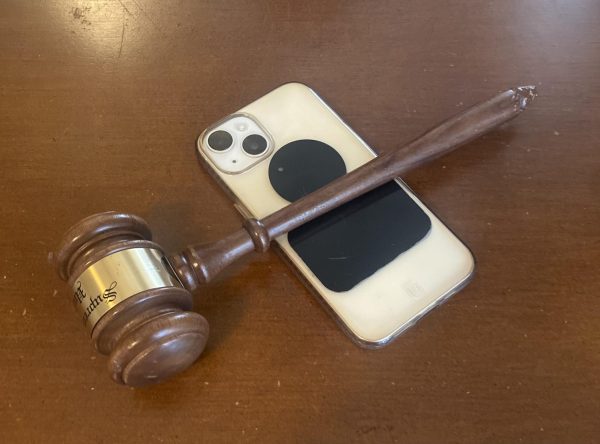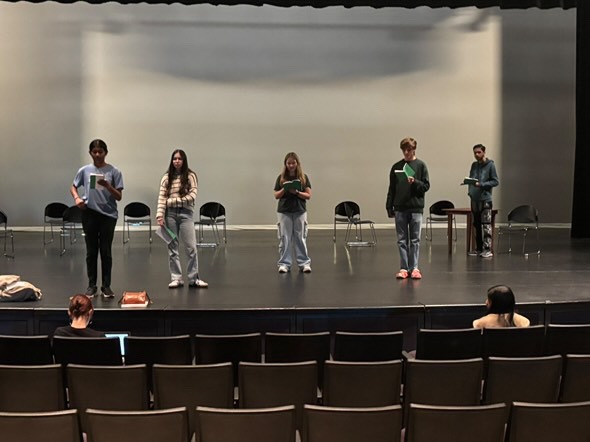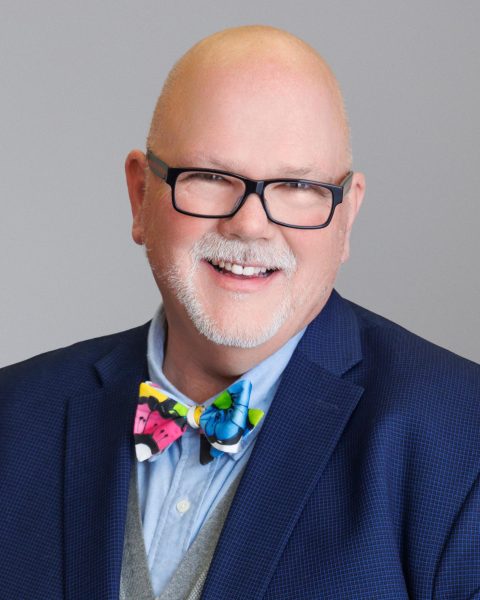Say YES To the Dress Code?
No more measuring the length of shorts. No more bringing jackets to school to hide spaghetti straps. No more fear of “those” teachers. These sentiments resonate within many Wilcox students now that the official dress code has become more open and permissive.
The official Wilcox dress code policy was rewritten by the Wilcox administration team over the summer to become much more lenient and forgiving than the dress codes of previous years. The basic principle is that “Certain body parts must be covered for all students. Clothes must be worn in a way such that genitals, buttocks, and nipples are covered with opaque material,” as is stated in the student/parent handbook. Students must wear tops, bottoms, and “activity-specific shoes.” Students cannot wear clothes that may harm others, display violent images, gang-related images, profanity, or that covers faces (except for religious observance).
Though this dress code is significantly different from previous years, it was a conscious decision that was prompted by years of growing national conversation about the topic of gender inequity in school dress codes. The Wilcox administration team had been rolling out small changes in the dress code in the years prior, but decided to make a more significant change after careful consideration. When asked what exactly prompted the change, Principal Gonzalez explained that “The MeToo Movement helped fuel the attention towards [school dress codes], and the attention spotlighted the inequity within many school dress codes, and how they tend to be directed at females rather than males.” Principal Gonzalez explained that many students had raised concerns over the years regarding how the dress code disproportionately discriminated against females. She explains that the Wilcox administrative team spent a few years taking feedback and doing research on other school’s dress codes. “We are an educational institution but also a social institution,” explains Principal Gonzalez. “We are responsible for raising students to be productive, contributing members of society and respond to societal changes… We don’t want to do anything to perpetuate victim blaming or rape culture.” The Wilcox administration’s main goal in the change was to establish that Wilcox should allow students to express themselves through the clothes they wear as long as it does not compromise anyone’s safety or ability to learn.
It seems that an underlying theme in prompting the change in the dress code was the discussion of sexism and victim-blaming. Around the nation, many worry that banning students from wearing certain clothing not only restricts their freedoms but also makes girls more likely to be blamed for the distraction of other students—an idea that many believe sexualizes girls and promotes victim shaming. In a San Jose Unified school, a student named Madeline Armacost was forced to change into PE shorts after she was called out for having shorts that were deemed a “distraction.” She and her mother argued against the district, saying that the dress code targeted and publicly humiliated girls, according to Mercury News. This sparked a significant change in the San Jose Unified school dress code, and even influenced Wilcox’s new dress code, according to Principal Gonzalez. Many school dress codes across the country are changing, and many have the larger goal of making clothing choice a discussion between parents/guardians and students so that students can develop their own sense of what is appropriate to wear.
Though many may view the change in Wilcox’s dress code as progressive, others believe that it is too lenient for a learning environment. According to Principal Gonzalez, there have been almost no complaints about the change from students, however, many adults have qualms about it. When asked about her opinions on the new dress code, Ms. Courey, an English teacher at Wilcox, replied, “I disagree with it. School is a place where we offer our judgement on a lot of things, and we have a responsibility: We are teaching our students how to prepare for life… Part of that is how you dress, and there is a difference between inappropriate and appropriate clothing.” In relation to the objectives of the dress code, Ms. Courey expressed, “It can’t be dangerous and it shouldn’t distract from learning. But I would add a third one: It shouldn’t make other people uncomfortable… I find that we cater to the few at the expense of the many.” Ms. Courey explains she has heard from other teachers that students can experience discomfort because of what other students are wearing. She believes that sexism is apparent through the fashion industry’s sexualization of young girls, and that its influence on the fashion choices of young females is partly the reason why they were disproportionately affected by the old dress code.
Ms. Hardy, Wilcox’s Calculus AB and Computer Science teacher, similarly believes that the updated dress code may be too lenient. She expressed, “The reason for the dress code is to teach [students] to dress appropriately… The way you dress says something about you.” Ms. Hardy added that, “I’m going to hear students complain about everything… Sometimes students seem to forget that… we care about you, and it is our job to uphold school rules.”
Other teachers echo a voice of support for the new policy. When asked about her opinions about the change, Ms. Dutton replied, “I think it’s a positive change. I think the dress code disproportionately affected girls instead of applying to everyone … Society’s changing and fashion’s changing, so it makes sense.” Mr. Dobos shared a similar sentiment, and explained that, “Not worrying about lengths of shirts and shorts or widths of tank tops is definitely a lot easier because I can focus on taking attendance and getting started with my class.”
Junior Nina Thomas applauds the new dress code. “I feel more comfortable with the dress code now,” explains Thomas, “It was a little unreasonable in the past, especially for females.” Societal expectations and codes are constantly changing. As this is reflected in our school policies, it is important that we discuss how they will impact our choices of expression in the future.






